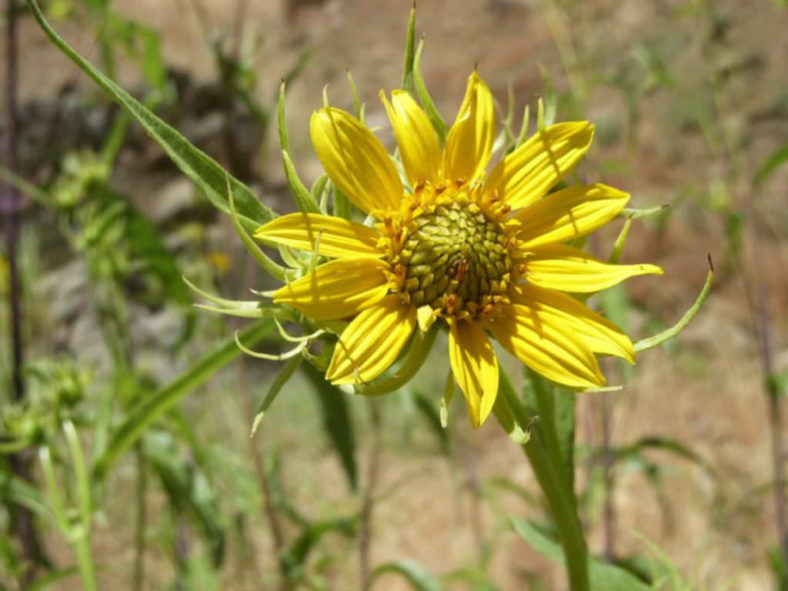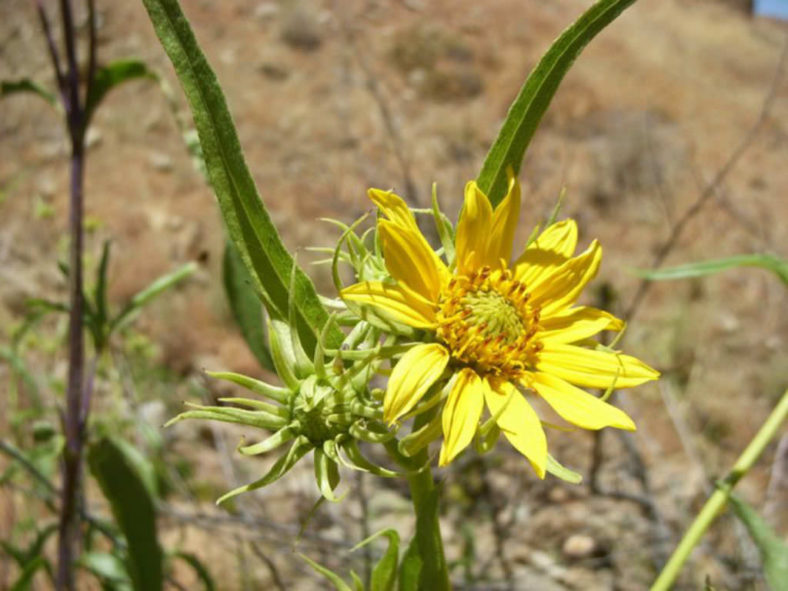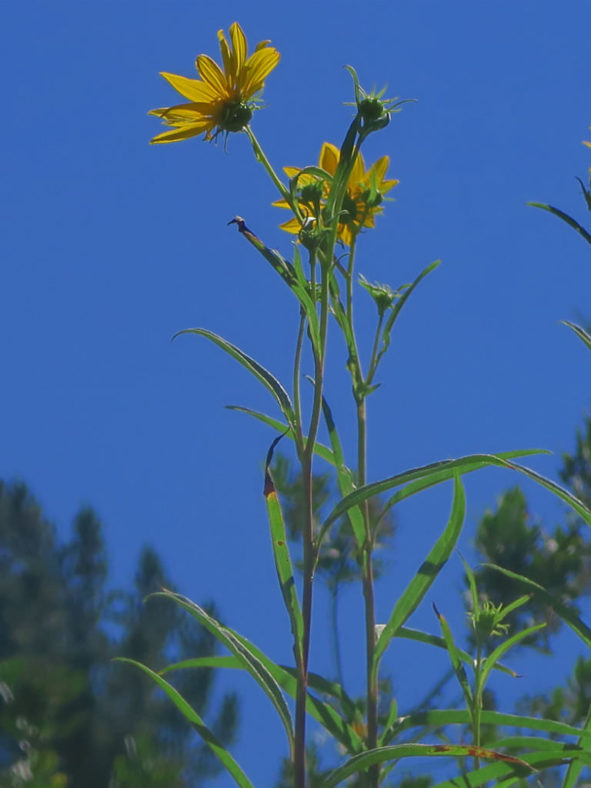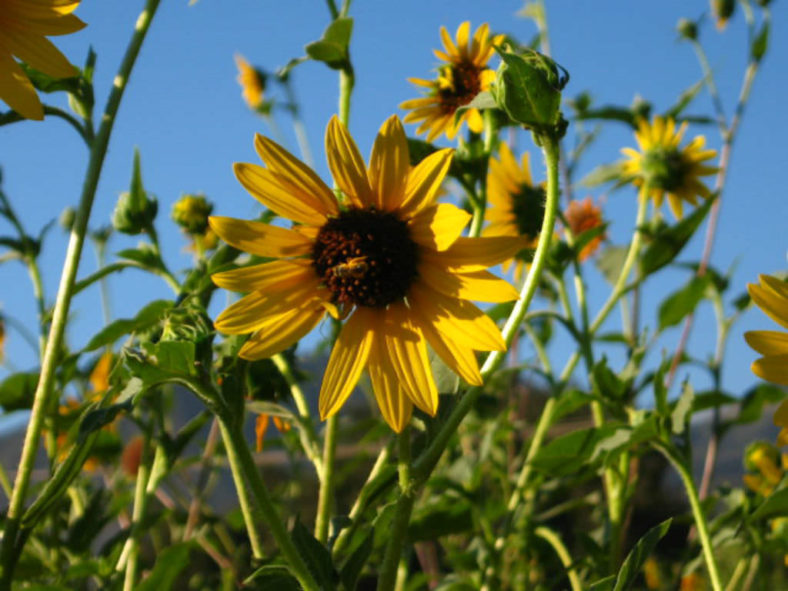Scientific Name
Helianthus californicus DC.
Common Name(s)
California Sunflower
Synonym(s)
Helianthus californicus var. californicus
Scientific Classification
Family: Asteraceae
Subfamily: Asteroideae
Tribe: Heliantheae
Genus: Helianthus
Origin
Helianthus californicus is native to California in the United States and Baja California in Mexico.
Flower
Color: Golden yellow
Bloom Time: Summer to fall
Description
Helianthus californicus is an erect perennial herb with a thin, up to 10 feet (3 cm) tall stem. Leaves are lance-shaped, smooth or slightly toothed along the edges, and up to 8 inches (20 cm) long.
The inflorescence holds several flower heads, each supported by a base covered in long pointed phyllaries that bend back as the head ages and develops fruit. The flower head has a fringe of golden yellow ray florets, each up to 1.2 inches (3 cm) long, and a center filled with curly yellow and brown disc florets.

Hardiness
USDA hardiness zone 11a to 12a: from 30 °F (−1.1 °C) to 55 °F (+12.8 °C).
How to Grow and Care
If you decide to add Sunflowers to your garden, there are a few things you will want to keep in mind.
First of all, they are called sunflowers for a reason. They need sun. Make sure that the location you choose for your Sunflowers gets full sun.
Second, you do not need to worry about soil too much. They are not picky about the soil conditions, but they are plants. They will do better in better soil.
Third, Sunflower seed shells do contain a substance that is toxic to grass. So, you will need to either harvest the Sunflower heads before the seeds begin to fall out, or you will need to plant your Sunflowers in a location where you do not mind any nearby grass being killed.
Fourth, keep in mind the height of the Sunflower variety you have chosen. A giant, twelve-foot variety will end up acting very much like a small tree and may shade the surrounding flowers.
See more at How to Grow and Care for Sunflowers.
Links
- Back to genus Helianthus
- Plantpedia: Browse flowering plants by Scientific Name, Common Name, Genus, Family, USDA Hardiness Zone, or Origin
Photo Gallery
Click on a photo to see a larger version.




